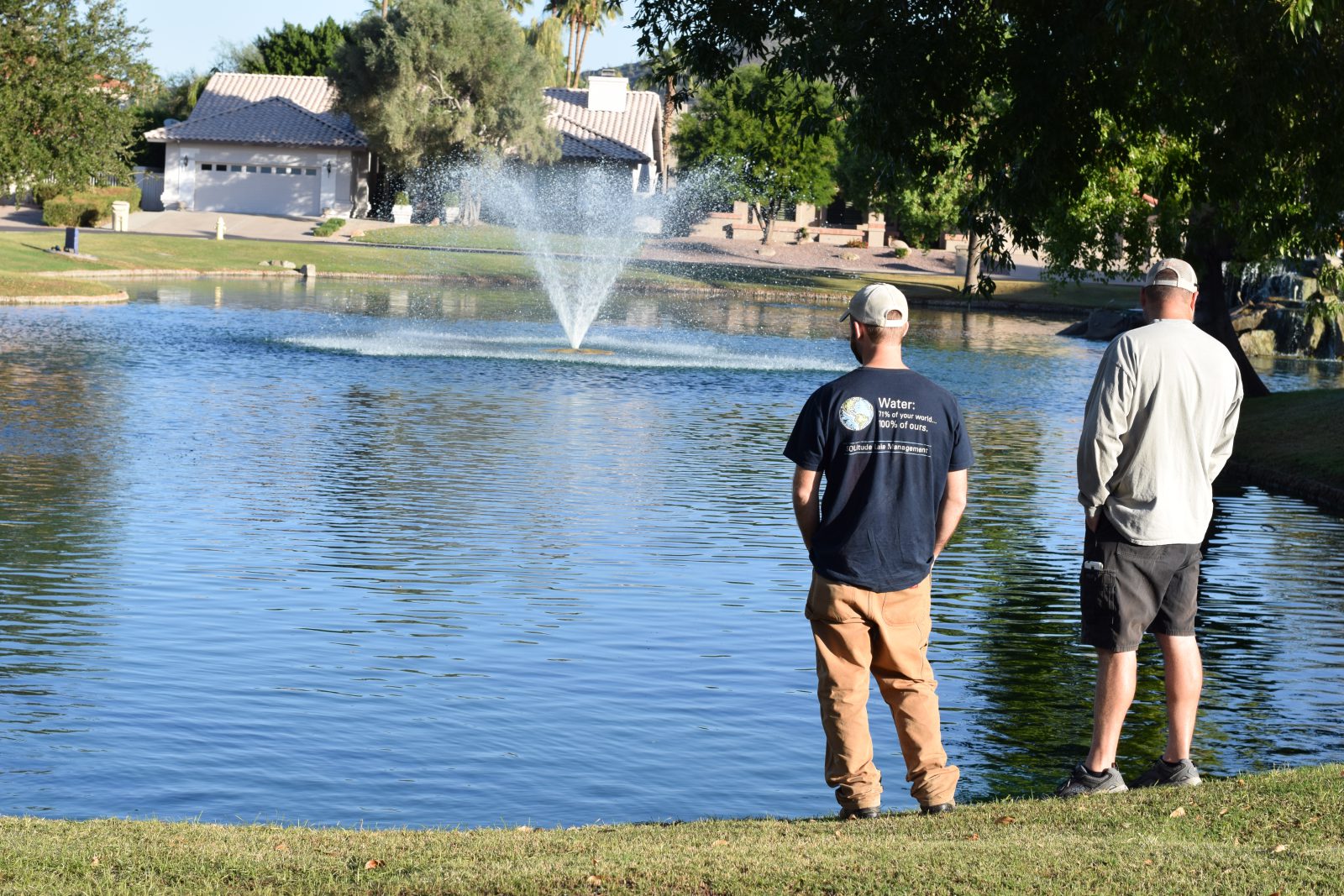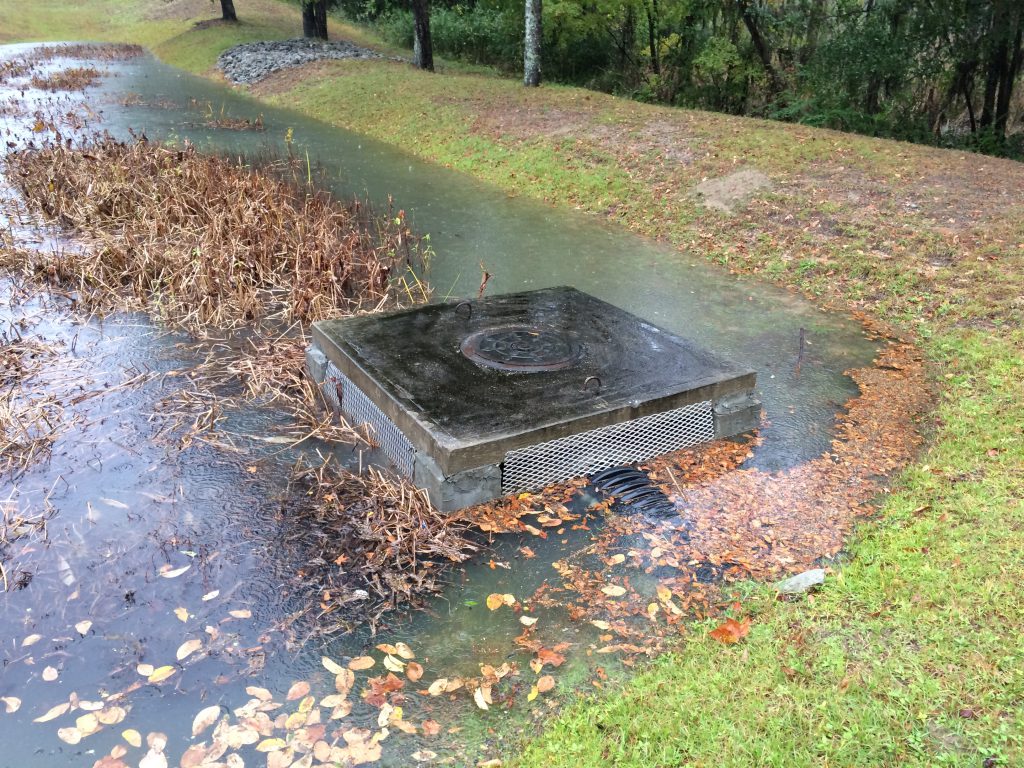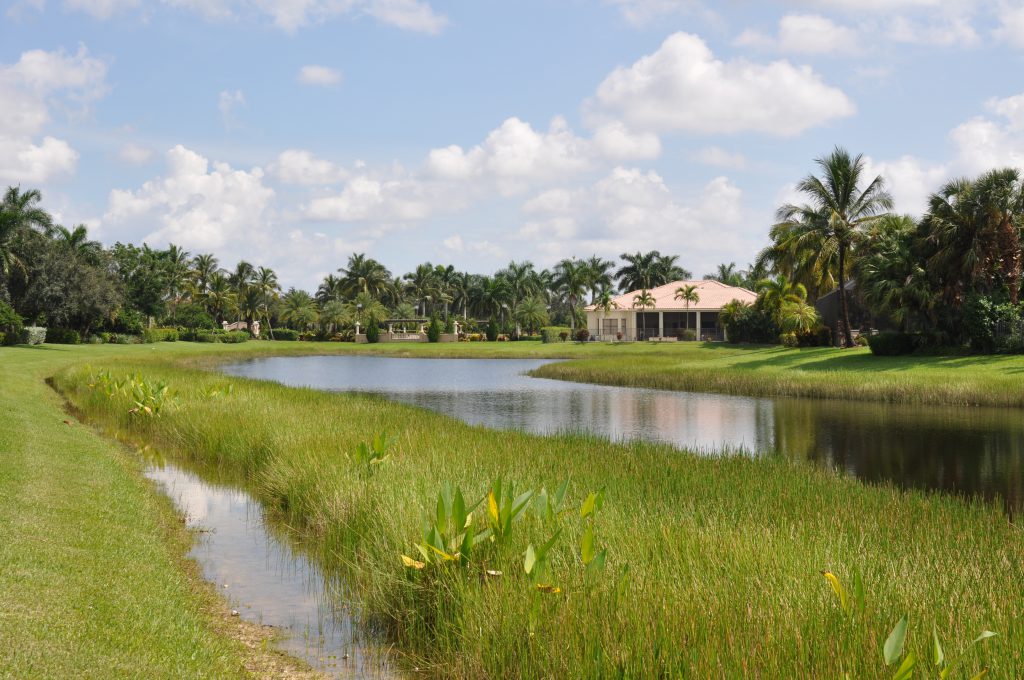

Nutrient Loading: Cultural Practices and Stormwater Pond Management
Benjamin Franklin once said “an ounce of prevention is worth a pound of cure.” This can be applied to many aspects in life, including lake and pond management. Many cultural practices in lawn and turfgrass maintenance can significantly impact the overall health of a lake. As fall and winter approach, some preventative measures will provide long-term benefits for having a healthy lake or pond.
Limiting phosphorous inflow to your lake or pond will reduce unwanted pond algae blooms. Grass clippings contain phosphorous and blowing clippings into storm drains or directly into ponds provides a direct nutrient source for algae growth. Some studies have estimated that one bushel of grass clippings contains 0.1 pounds of phosphorous and can potentially cause the growth of 30 to 50 pounds of algae in a lake or pond. Leaving grass clippings on your lawn can provide some natural fertilization benefits, as the clippings contain a significant amount of water and decompose quickly, which can reduce the amount of fertilizer required.

Algae growth in lakes or ponds can also be attributed to leaf litter. Leaves contribute phosphorous to ponds and can significantly reduce the waterbody’s depth and volume capacity over time. Bagging leaves and keeping them from entering ponds and storm drains will also reduce the amount of debris present to clog floating fountain intake screens, nozzles, and impellers. Fountains will often become clogged when leaves are blown into ponds, as they can completely cover a strainer screen, drastically reducing the water flow. Debris will also wrap inside fountain nozzles and impellers causing fountain patterns to be very low.
Bank stabilization and beneficial vegetative buffers are also important in minimizing debris and nutrient loading in waterbodies. Having well-stabilized grassy banks will reduce phosphorous loading from erosion. Vegetative buffers help trap leaves, debris, and sediment, and will filter nutrients before they enter the lake or pond, reducing the chances of algae blooms and fountains clogging with debris.
Many of these preventative measures will provide direct aesthetic benefits to your lake or pond, and will also provide long-term benefits to your local watershed.
SOLitude Lake Management is a nationwide environmental firm committed to providing sustainable solutions that improve water quality, enhance beauty, preserve natural resources and reduce our environmental footprint. SOLitude’s team of aquatic resource management professionals specializes in the development and execution of customized lake, pond, wetland and fisheries management programs that include water quality testing and restoration, nutrient remediation, algae and aquatic weed control, installation and maintenance of fountains and aeration systems, bathymetry, mechanical harvesting and hydro-raking, lake vegetation studies, biological assessments, habitat evaluations, and invasive species management. Services and educational resources are available to clients nationwide, including homeowners associations, multi-family and apartment communities, golf courses, commercial developments, ranches, private landowners, reservoirs, recreational and public lakes, municipalities, drinking water authorities, parks, and state and federal agencies. SOLitude Lake Management is a proud member of the Rentokil Steritech family of companies in North America.









